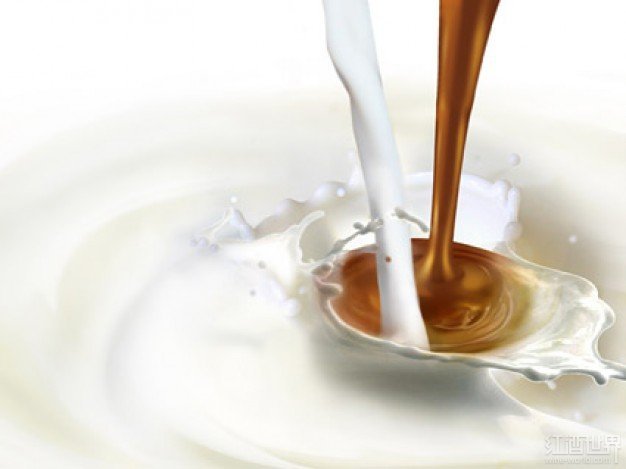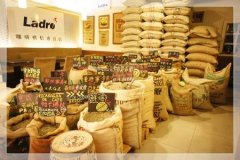Analysis on the types of Milk of Coffee and Milk Coffee
Coffee and milk are the best "companions". People have been adding milk to coffee since the early days of coffee. Adding milk to coffee can not only improve the nutritional value of coffee, but also improve its taste and make it look sweet and smooth.
There are many dairy products on the market, in the face of these dazzling products, which type of coffee should be chosen to make coffee? Here's what happens when different dairy products are paired with coffee.

Classified according to the source of dairy products
(1) Milk: milk is a traditional coffee companion. It can add sweetness and texture to the coffee, but it won't steal the limelight. And milk is cheaper and easy to buy, so most people are very familiar with it and can accept its flavor characteristics.
(2) Goat milk: goat milk has a strong flavor similar to salt and grass. People who like Greek yogurt should like goat milk very much. Goat's milk is not as sweet as milk and is best used to make coffee that has been moderately roasted. (3) Buffalo milk: Buffalo milk has the highest fat content, extremely rich taste, with a sweet, cheese-like exciting flavor, some people may not like this taste. In the morning, drink a cup of coffee with the right amount of buffalo milk, and you will enjoy it all morning. Buffalo milk is rare and expensive, so if you have a chance, you might as well give it a try.
Classified according to the milk fat content of dairy products:
(1) whole milk: whole milk refers to pure milk without artificial skimming, but its fat content is actually very low. Dairy products marked as whole milk need to have at least 3.25% fat (American standard), and most companies make milk taste better by making it 4% fat. Whole milk is the most commonly used dairy product in coffee shops because it contains just the right amount of fat, neither more nor less, and can achieve an ideal balance between flavor and texture when mixed with coffee.
(2) low-fat milk: low-fat milk refers to milk with a fat content of about 1% or 2%. Although their fat content has been reduced, there is no significant change in flavor and taste, but it may seem a little thin compared to whole milk. In a coffee shop, if baristas run out of low-fat milk, they mix whole and skim milk to get roughly low-fat milk, but the resulting milk sometimes appears to be too hydrated or too fat.
(3) skim milk: this milk contains no fat at all, which may be one of the reasons why they have a faint blue hue. Fat balls can only refract light with longer wavelengths, which makes dairy products look whiter, so milk with fat looks milky white. The main component of skim milk is casein, which can only refract light with shorter wavelengths. This kind of milk tastes sweeter because it has no fat. Hot skim milk produces thicker and denser bubbles, which, when added to the coffee, make the coffee nearly gray and sweeter.
(4) Cream: there are many types of cream, such as low-fat cream, semi-fat cream, high-fat cream and heavy fat cream. Obviously, the biggest difference between these creams is the content of cream.
Semi-fat cream has the lowest fat content, only 12%; low-fat cream has 20% fat content, and high-fat cream has 38%. The fat content of heavy cream is also 38%, but it is inflatable. Semi-fat cream is actually equivalent to a low-sugar drink, for more sweet people, in order to give coffee enough sweetness and smooth taste, you may need to add more semi-fat cream. The cream itself tastes like custard or melted ice cream, even adding a small amount of cream to the coffee can make the coffee more delicious and fragrant.
Important Notice :
前街咖啡 FrontStreet Coffee has moved to new addredd:
FrontStreet Coffee Address: 315,Donghua East Road,GuangZhou
Tel:020 38364473
- Prev

The name and distribution ratio of 31 kinds of common coffee in the world
A British travel website shows you the name and composition ratio of 31 common coffees around the world in a straightforward picture, so you don't have to talk about American style all the time. It is strongly recommended to turn your phone sideways to read the words on the picture for the sake of your eyes. There is no doubt that if you order coffee in any of the 6 million coffee shops in the United States, you will get real coffee. The picture above is a summary of the website.
- Next

Coffee knowledge popularization, coffee storage and handling
Coffee spoils very quickly after roasting. Once the aroma is gone, the coffee is completely stale. Roasted coffee deteriorates much faster than fried tea. Oxygen, moist air and sunlight can cause the taste and aroma of coffee to disappear instantly, so the coffee grinder used in the coffee shop is sealed, and the barista should always make sure the lid is covered.
Related
- Beginners will see the "Coffee pull flower" guide!
- What is the difference between ice blog purified milk and ordinary milk coffee?
- Why is the Philippines the largest producer of crops in Liberia?
- For coffee extraction, should the fine powder be retained?
- How does extracted espresso fill pressed powder? How much strength does it take to press the powder?
- How to make jasmine cold extract coffee? Is the jasmine + latte good?
- Will this little toy really make the coffee taste better? How does Lily Drip affect coffee extraction?
- Will the action of slapping the filter cup also affect coffee extraction?
- What's the difference between powder-to-water ratio and powder-to-liquid ratio?
- What is the Ethiopian local species? What does it have to do with Heirloom native species?

